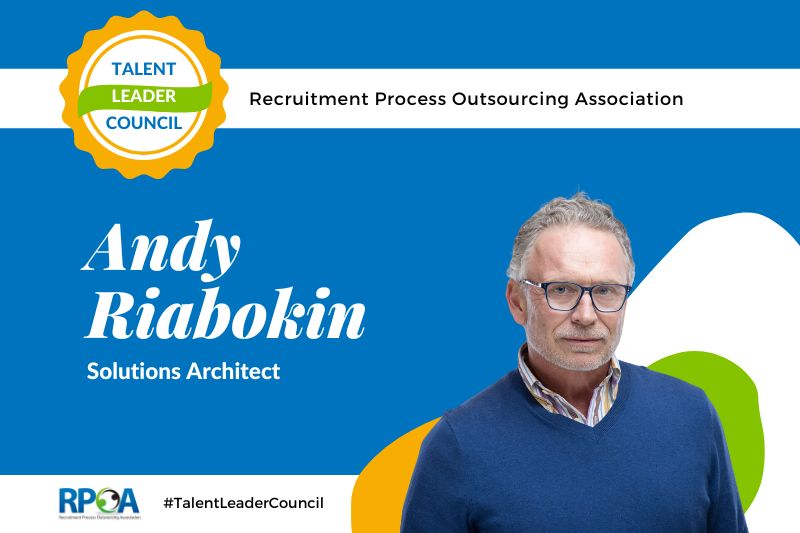
Total talent acquisition(TTA) can help organizations' acquisition of talent by increasing access to every kind of worker. Organizations must find new and innovative ways to bring the best talent aboard to compete in the tight labor market. This approach looks beyond traditional methods and casts a wider net to include every type of talent. Thanks to technological advances, total talent acquisition is now possible, making connecting with potential employees from all corners of the labor market easier. By tapping into this vast pool of resources, businesses can find the perfect fit for every job and continue succeeding in today's competitive talent market.
During our latest RPO Expert Panel, moderator Brian Delle Donne, President of Talent Tech Labs, and total talent acquisition leaders Jason Krumwiede of Broadleaf Results, Jen Spicher of LevelUp HCS, and Maria Castro Nevares of Manpower Group discussed the benefits of TTA and the reasons companies are slow to adopt TTA as a solution for current hiring challenges.
What is Total Talent Acquisition?
Total Talent Acquisition(TTA) is a broad, holistic approach to acquiring talent that meets business objectives. It's a talent acquisition(TA) solution focused on meeting the employer's hiring needs to find candidates no matter their job classification.
The panelists pointed out that TTA combines a blend including people, sources, tools, and technology. This blend creates a convergence or integration of an employer's RPO solution, if one exists, their full and temp hiring solution, and contingent and 1099 workforce. Also, this type of integration gives TA leaders and hiring managers flexibility in hiring and deeper insight into the candidate they're sourcing.
How Does Total Talent Acquisition Increase The Acquisition of Every Kind of Talent?
Spicher observed that TTA creates flexibility for companies to bring in different types of jobs, giving them greater access to many different kinds of workers. She shared that many mid-market companies are doing all they can to compete with the large-market firms to attract and hire top talent. Finding top talent is complex because many workers want to work remotely. Still, some companies want their workers in the office. TTA is agile enough for companies to source workers who wish to work remotely and those who want to work in the office or a hybrid situation.
Krumwiede noted that TTA provides flexibility at the start of the hiring process. Then a TTA strategy is built out focused on the target candidates. A TTA strategy will pinpoint whether you need full-time, half-time, part-time, temp worker, contingent worker, or a 1099 worker to meet business goals.
Nevares emphasized that the flexibility of TTA gives organizations a robust solution to the talent shortage. With increased access to every type of worker, whether contingent or full-time, firms can scale up or down in all aspects of their operations and better forecast hiring needs. She meant that TTA gives companies the agility to adjust to various shifts and dates of work and vacation time or PTO. She observed that the flexibility of TTA also lends itself to reshaping organizations' employer value proposition(EVP). TTA can help organizations create an EVP that attracts a large, diverse pool of workers.
What Are Some Obstacles to Adopting Total Talent Acquisition?
Spicher noted that the main obstacle to adopting TTA is the siloing of the HR, procurement, and business functions. When these three functions don't combine to create the talent acquisition strategy, the likelihood of a successful hiring process is slim. She observed that when procurement and HR, for instance, are on the same page, the process moves faster and increases TA success.
Krumwiede observed that changes in stakeholders, competing priorities, and the failure of organizations to do anything to fix the problem have contributed to companies failing to adopt TTA. As he sees it, TTA is the integration of all the talent acquisition systems within a company. He believes that RPO providers should act as facilitators bringing all the department leaders of the organization into the same room to create a TA strategy that hires the right talent while resolving cybersecurity issues and ensuring the strategy meets all business goals.
His competing priorities include COVID-19, regulations, and situational changes with which most business leaders focus their attention. He described the situation as the game whack-a-mole. Whenever an opportunity to implement TTA comes, a competing priority shows its ugly head.
He has also observed that stakeholders have changed. There are instances where specific leaders within the company get on board with implementing TTA, but the company transfers those same leaders to different departments. It's kind of like rolling the rock of Sisyphus up a hill.
Nevares added that technology complicated the adoption of TTA. She pointed out that many companies are increasing their talent technology, which is good. But Krumwiede stated, "It's an opportunity for [RPO providers] to facilitate that integration."
How Does Technology Increase the Use of Total Talent Acquisition?
Regarding technology and TTA adoption, technology is a two-edged sword. The panelists all agreed that more and more companies are increasing their use of talent technology, but the act of integrating multiple platforms can get scary. However, RPO providers have used technology to help their strategic partners fully adopt TTA.
Spicher and Nevares agreed that there's not a one-size fits all tech stack. The decision about which tech tools to use will depend on the size of the company and its budget. The RPO provider will always ensure that the technology will deliver precisely what the strategic partner wants.
Krumwiede shared how RPOs provide technology that shows the effectiveness of a TTA solution. He noted that RPOs would bring in their tech stack and adapt it to the current processes of the client's ATS. RPOs could plug in a tech stack to help automate some interactions between candidates and recruiters. He observed that texting tools are very effective for sourcing and engaging candidates.
There are numerous talent-tech tools and software available to implement TTA. Nevares suggested that companies implementing a TTA strategy use technology that will look into the various systems in use and create dashboards to give visibility to the stopping and starting of specific TTA programs.
The benefits of TTA are clear, but silos within organizations have been the main obstacle to adoption. Our panelists provided insights on how technology complicates things and what you can do to get started with TTA. Watch this discussion and learn more about how TTA can help hire the right talent for your organization.














